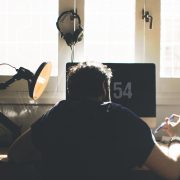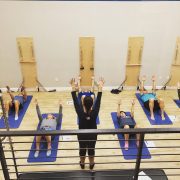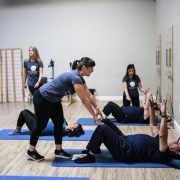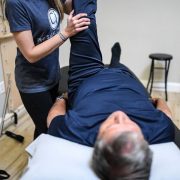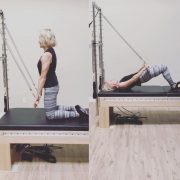4 Tips to Save your Neck and Back During Summer Road Trips
Now that summer is in full swing, but a lot of people don’t feel comfortable flying, many of us are planning road trips for those special summer getaways! It’s always fun to hit the road and explore a new place — but first, let me help you out with some tips to save your neck and back…
(For more tips – check out our Free Guides section on our website and also join us for our next virtual workshop all about neck and shoulder pain!)
Tip #1: Interrupt your sitting
The biggest strain on your body while traveling is undoubtedly the prolonged periods of sitting. Our bodies are made to move continuously throughout the day. Too much sitting puts extra load and compression on your spine, and can trigger an underlying problem you weren’t even aware of.
On road trips, getting out of your seat is critical for keeping your neck and back healthy. Try to plan extra time in your trip to pull over at rest stops and walk around. We recommend interrupting your sitting every 30 minutes for good neck and back health. I understand keeping up with that frequency on a long road trip is difficult, but something is better than nothing! You’ll want to capitalize on your rest stops by moving around instead of sitting.
Tip #2: Use a lumbar pillow
A proper lumbar pillow is not only essential for good lower back alignment while sitting, but also for proper neck alignment. We have natural curves in our spine that are designed to absorb shock and disperse load. When those curves aren’t maintained, especially for prolonged periods, you get abnormal and unwanted forces throughout your spine – resulting in pain and stiffness.
Ever heard of the dreaded “forward head?”
That’s the posture your neck assumes when it needs to compensate for lower back slouching. We sell lumbar pillows in our office, but you can also try making your own by rolling up a towel or sweatshirt. Just make sure the roll is thick enough to maintain the natural curve in your lower back without much effort while you sit. The built-in lumbar supports that come with your car are typically NOT adequate enough.
Tip #3: Adjust your car seat
This is an often overlooked, but important component to achieve healthy posture while driving. Too often, I see folks driving around with seats that are either too far away or too close to their steering wheel. If you’re too close, it will cause you to sit overly straight or upright, resulting in unnecessary strain in your neck and low back. If your seat is too far back, then it will be virtually impossible to maintain the natural curve in your lower spine, even with one of our lumbar pillows. Your arms will need to overreach for the steering wheel, causing strain in your shoulders. And your neck will assume that forward head posture just to remain upright, causing strain to your neck.
You want to make sure your seat is positioned in a way that allows your neck to be easily balanced on top of your spine and pelvis – without much effort. Your elbows should be at an approximate 90 degree angle when your hands are on the steering wheel, and there should be a relaxed 45 degree bend at your knee so that your foot can easily switch from gas to break without you having to constantly flex your thigh. Having your car seat positioned correctly before you take a long drive will significantly decrease the strain on your neck and back.
Tip #4: Use a neck pillow when you sleep
On road trips – we often sleep on mattresses that are less than optimal and certainly not as comfy as our own. Using a neck pillow while you sleep can significantly decrease morning pain and stiffness caused by poor sleeping postures.
Getting a good night’s sleep and not waking up in pain has a lot to do with the position you sleep in.
Just like with sitting, you want your sleeping position to be as balanced as possible. When you sleep on your stomach, your neck has no choice but to stay turned and extended to one side all night. Prolonged poor postures are not great for any joint in your body, but especially those in your neck. Your neck is the most mobile section of your spine which makes it much easier to “kink” if in a poor position. Sleeping on your back is not terrible, and it’s what many people prefer.., but depending on how firm or soft the mattress you’re sleeping on is… it could be difficult to maintain the natural curves in your neck and back while you sleep. If you sleep in a slouched position all night long, you’ll wake up with pain and stiffness.
If you can tolerate it, my favorite position for sleeping is on your side and with a neck pillow. This allows both your neck and low back to stay relaxed and with their natural curves.
To make a neck pillow, use a small towel roll about 3 inches in diameter and stuff it the long way inside the bottom of your pillow case. When you rest your head on the pillow, it acts like a comfy support to maintain good neck alignment while sleeping on your side. We can also order one for you!



